-
EXECUTIVE SUMMARY
-
MARKET INTRODUCTION
-
Definition
-
Scope of the Study
- Research Objective
- Assumptions
- Limitations
-
RESEARCH METHODOLOGY
-
3.1.
-
Overview
-
Data Mining
-
Secondary Research
-
Primary Research
- Primary Interviews and Information Gathering Process
- Breakdown
-
of Primary Respondents
-
Forecasting Model
-
Market Size Estimation
- Bottom-Up Approach
- Top-Down Approach
-
Data Triangulation
-
Validation
-
MARKET DYNAMICS
-
Overview
-
Drivers
-
Restraints
-
Opportunities
-
MARKET FACTOR ANALYSIS
-
5.1.
-
Value Chain Analysis
-
Porter’s Five Forces Analysis
- Bargaining
- Bargaining Power of Buyers
- Threat of
- Threat of Substitutes
- Intensity of Rivalry
-
Power of Suppliers
-
New Entrants
-
COVID-19 Impact Analysis
- Market Impact Analysis
- Regional
- Opportunity and Threat Analysis
-
Impact
-
GLOBAL THERMAL CONTROL
-
DEVICES MARKET, BY MATERIAL
-
Overview
-
Adhesive Material
-
6.3.
-
Non-Adhesive Material
-
GLOBAL THERMAL CONTROL DEVICES MARKET, BY DEVICE
-
Overview
-
Conduction Cooling Devices
-
Convection Cooling
-
Devices
-
Advanced Cooling Devices
-
Hybrid Cooling Devices
-
8.
-
GLOBAL THERMAL CONTROL DEVICES MARKET, BY END USER
-
Overview
-
8.2.
-
Aerospace & Defense
-
Automotive
-
Servers & Data Centers
-
Consumer Electronics
-
Enterprises
-
Healthcare
-
8.8.
-
Others
-
GLOBAL THERMAL CONTROL DEVICES MARKET, BY REGION
-
Overview
-
North America
- US
- Canada
-
Europe
- France
- UK
- Italy
- Spain
- Rest of Europe
-
9.2.1.
-
Germany
-
Asia-Pacific
- China
- India
- Japan
- South Korea
- Australia
- Rest of
-
Asia-Pacific
-
Rest of the World
- Middle East
- Africa
- Latin America
-
COMPETITIVE LANDSCAPE
-
Overview
-
10.2.
-
Competitive Analysis
-
Market Share Analysis
-
Major Growth Strategy
-
in the Global Thermal Control Devices Market,
-
Competitive Benchmarking
-
Leading Players in Terms of Number of Developments in the Global Thermal
-
Control Devices Market,
-
Key developments and Growth Strategies
- Merger & Acquisitions
- Joint Ventures
-
10.7.1.
-
New Product Launch/Service Deployment
-
Major Players Financial Matrix
- Major Players R&D Expenditure.
-
10.8.1.
-
Sales & Operating Income, 2022
-
COMPANY PROFILES
-
Applied Materials, Inc.
- Company
- Financial Overview
- Products Offered
- SWOT Analysis
- Key Strategies
- Company Overview
- Financial Overview
- Products Offered
- Key Developments
- SWOT Analysis
- Key Strategies
-
Overview
-
11.1.4.
-
Key Developments
-
11.2.
-
Cooltech Solutions, Inc.
-
Intel Corporation
- Company Overview
- Financial Overview
- Products Offered
- Key Developments
- SWOT Analysis
- Key Strategies
-
Parker Hannifin Corporation
- Company Overview
- Financial Overview
- Products
- Key Developments
- SWOT Analysis
- Key
-
Offered
-
Strategies
-
Honeywell International Inc.
- Company Overview
- Financial Overview
- Products Offered
- Key Developments
- SWOT Analysis
- Key Strategies
-
Thermocore, Inc.
- Company Overview
- Financial Overview
- Products
- Key Developments
- SWOT Analysis
- Key
-
Offered
-
Strategies
-
Delta Electronics, Inc.
- Company Overview
- Products Offered
- Key Developments
- SWOT Analysis
- Key Strategies
-
11.7.2.
-
Financial Overview
-
Wakefield-Vette
- Company Overview
- Financial Overview
- Products
- Key Developments
- SWOT Analysis
- Key
-
Offered
-
Strategies
-
Body Corporation
- Company Overview
- Products Offered
- Key Developments
- SWOT Analysis
- Key Strategies
-
11.9.2.
-
Financial Overview
-
Henkel AG &
- Company Overview
- Financial Overview
- Key Developments
- SWOT Analysis
-
Co. KGaA
-
11.10.3.
-
Products Offered
-
11.10.6.
-
Key Strategies
-
APPENDIX
-
References
-
Related Reports
-
-
LIST OF TABLES
-
GLOBAL THERMAL CONTROL DEVICES MARKET,
-
SYNOPSIS, 2020-2034
-
GLOBAL THERMAL CONTROL DEVICES MARKET, ESTIMATES
-
& FORECAST, 2020-2034 (USD BILLION)
-
GLOBAL THERMAL CONTROL DEVICES
-
MARKET, BY MATERIAL, 2020-2034 (USD BILLION)
-
GLOBAL THERMAL CONTROL
-
DEVICES MARKET, BY DEVICE, 2020-2034 (USD BILLION)
-
GLOBAL THERMAL CONTROL
-
DEVICES MARKET, BY END USER, 2020-2034 (USD BILLION)
-
NORTH AMERICA:
-
THERMAL CONTROL DEVICES MARKET, BY MATERIAL, 2020-2034 (USD BILLION)
-
TABLE
-
NORTH AMERICA: THERMAL CONTROL DEVICES MARKET, BY DEVICE, 2020-2034 (USD BILLION)
-
NORTH AMERICA: THERMAL CONTROL DEVICES MARKET, BY END USER, 2020-2034
-
(USD BILLION)
-
US: THERMAL CONTROL DEVICES MARKET, BY MATERIAL, 2020-2034
-
(USD BILLION)
-
US: THERMAL CONTROL DEVICES MARKET, BY DEVICE, 2020-2034
-
(USD BILLION)
-
US: THERMAL CONTROL DEVICES MARKET, BY END USER, 2020-2034
-
(USD BILLION)
-
CANADA: THERMAL CONTROL DEVICES MARKET, BY MATERIAL,
-
CANADA: THERMAL CONTROL DEVICES MARKET, BY
-
DEVICE, 2020-2034 (USD BILLION)
-
CANADA: THERMAL CONTROL DEVICES MARKET,
-
BY END USER, 2020-2034 (USD BILLION)
-
EUROPE: THERMAL CONTROL DEVICES
-
MARKET, BY MATERIAL, 2020-2034 (USD BILLION)
-
EUROPE: THERMAL CONTROL
-
DEVICES MARKET, BY DEVICE, 2020-2034 (USD BILLION)
-
EUROPE: THERMAL
-
CONTROL DEVICES MARKET, BY END USER, 2020-2034 (USD BILLION)
-
GERMANY:
-
THERMAL CONTROL DEVICES MARKET, BY MATERIAL, 2020-2034 (USD BILLION)
-
TABLE
-
GERMANY: THERMAL CONTROL DEVICES MARKET, BY DEVICE, 2020-2034 (USD BILLION)
-
GERMANY: THERMAL CONTROL DEVICES MARKET, BY END USER, 2020-2034 (USD BILLION)
-
FRANCE: THERMAL CONTROL DEVICES MARKET, BY MATERIAL, 2020-2034 (USD BILLION)
-
FRANCE: THERMAL CONTROL DEVICES MARKET, BY DEVICE, 2020-2034 (USD BILLION)
-
FRANCE: THERMAL CONTROL DEVICES MARKET, BY END USER, 2020-2034 (USD BILLION)
-
ITALY: THERMAL CONTROL DEVICES MARKET, BY MATERIAL, 2020-2034 (USD BILLION)
-
ITALY: THERMAL CONTROL DEVICES MARKET, BY DEVICE, 2020-2034 (USD BILLION)
-
ITALY: THERMAL CONTROL DEVICES MARKET, BY END USER, 2020-2034 (USD BILLION)
-
SPAIN: THERMAL CONTROL DEVICES MARKET, BY MATERIAL, 2020-2034 (USD BILLION)
-
SPAIN: THERMAL CONTROL DEVICES MARKET, BY DEVICE, 2020-2034 (USD BILLION)
-
SPAIN: THERMAL CONTROL DEVICES MARKET, BY END USER, 2020-2034 (USD BILLION)
-
UK: THERMAL CONTROL DEVICES MARKET, BY MATERIAL, 2020-2034 (USD BILLION)
-
UK: THERMAL CONTROL DEVICES MARKET, BY DEVICE, 2020-2034 (USD BILLION)
-
UK: THERMAL CONTROL DEVICES MARKET, BY END USER, 2020-2034 (USD BILLION)
-
REST OF EUROPE: THERMAL CONTROL DEVICES MARKET, BY MATERIAL, 2020-2034
-
(USD BILLION)
-
REST OF EUROPE: THERMAL CONTROL DEVICES MARKET, BY DEVICE,
-
REST OF EUROPE: THERMAL CONTROL DEVICES MARKET,
-
BY END USER, 2020-2034 (USD BILLION)
-
ASIA-PACIFIC: THERMAL CONTROL
-
DEVICES MARKET, BY MATERIAL, 2020-2034 (USD BILLION)
-
ASIA-PACIFIC:
-
THERMAL CONTROL DEVICES MARKET, BY DEVICE, 2020-2034 (USD BILLION)
-
TABLE 24
-
ASIA-PACIFIC: THERMAL CONTROL DEVICES MARKET, BY END USER, 2020-2034 (USD BILLION)
-
JAPAN: THERMAL CONTROL DEVICES MARKET, BY MATERIAL, 2020-2034 (USD BILLION)
-
JAPAN: THERMAL CONTROL DEVICES MARKET, BY DEVICE, 2020-2034 (USD BILLION)
-
JAPAN: THERMAL CONTROL DEVICES MARKET, BY END USER, 2020-2034 (USD BILLION)
-
CHINA: THERMAL CONTROL DEVICES MARKET, BY MATERIAL, 2020-2034 (USD BILLION)
-
CHINA: THERMAL CONTROL DEVICES MARKET, BY DEVICE, 2020-2034 (USD BILLION)
-
CHINA: THERMAL CONTROL DEVICES MARKET, BY END USER, 2020-2034 (USD BILLION)
-
INDIA: THERMAL CONTROL DEVICES MARKET, BY MATERIAL, 2020-2034 (USD BILLION)
-
INDIA: THERMAL CONTROL DEVICES MARKET, BY DEVICE, 2020-2034 (USD BILLION)
-
INDIA: THERMAL CONTROL DEVICES MARKET, BY END USER, 2020-2034 (USD BILLION)
-
AUSTRALIA: THERMAL CONTROL DEVICES MARKET, BY MATERIAL, 2020-2034 (USD
-
BILLION)
-
AUSTRALIA: THERMAL CONTROL DEVICES MARKET, BY DEVICE, 2020-2034
-
(USD BILLION)
-
AUSTRALIA: THERMAL CONTROL DEVICES MARKET, BY END USER,
-
SOUTH KOREA: THERMAL CONTROL DEVICES MARKET,
-
BY MATERIAL, 2020-2034 (USD BILLION)
-
SOUTH KOREA: THERMAL CONTROL
-
DEVICES MARKET, BY DEVICE, 2020-2034 (USD BILLION)
-
SOUTH KOREA: THERMAL
-
CONTROL DEVICES MARKET, BY END USER, 2020-2034 (USD BILLION)
-
REST
-
OF ASIA-PACIFIC: THERMAL CONTROL DEVICES MARKET, BY MATERIAL, 2020-2034 (USD BILLION)
-
REST OF ASIA-PACIFIC: THERMAL CONTROL DEVICES MARKET, BY DEVICE, 2020-2034
-
(USD BILLION)
-
REST OF ASIA-PACIFIC: THERMAL CONTROL DEVICES MARKET,
-
BY END USER, 2020-2034 (USD BILLION)
-
REST OF THE WORLD: THERMAL CONTROL
-
DEVICES MARKET, BY MATERIAL, 2020-2034 (USD BILLION)
-
REST OF THE WORLD:
-
THERMAL CONTROL DEVICES MARKET, BY DEVICE, 2020-2034 (USD BILLION)
-
TABLE 45
-
REST OF THE WORLD: THERMAL CONTROL DEVICES MARKET, BY END USER, 2020-2034 (USD BILLION)
-
MIDDLE EAST: THERMAL CONTROL DEVICES MARKET, BY MATERIAL, 2020-2034 (USD
-
BILLION)
-
MIDDLE EAST: THERMAL CONTROL DEVICES MARKET, BY DEVICE, 2020-2034
-
(USD BILLION)
-
MIDDLE EAST: THERMAL CONTROL DEVICES MARKET, BY END
-
USER, 2020-2034 (USD BILLION)
-
AFRICA: THERMAL CONTROL DEVICES MARKET,
-
BY MATERIAL, 2020-2034 (USD BILLION)
-
AFRICA: THERMAL CONTROL DEVICES
-
MARKET, BY DEVICE, 2020-2034 (USD BILLION)
-
AFRICA: THERMAL CONTROL
-
DEVICES MARKET, BY END USER, 2020-2034 (USD BILLION)
-
LATIN AMERICA:
-
THERMAL CONTROL DEVICES MARKET, BY MATERIAL, 2020-2034 (USD BILLION)
-
TABLE
-
LATIN AMERICA: THERMAL CONTROL DEVICES MARKET, BY DEVICE, 2020-2034 (USD BILLION)
-
LATIN AMERICA: THERMAL CONTROL DEVICES MARKET, BY END USER, 2020-2034
-
(USD BILLION)
-
LIST OF FIGURES
-
RESEARCH PROCESS
-
FIGURE 2
-
MARKET STRUCTURE FOR THE GLOBAL THERMAL CONTROL DEVICES MARKET
-
MARKET
-
DYNAMICS FOR THE GLOBAL THERMAL CONTROL DEVICES MARKET
-
GLOBAL THERMAL
-
CONTROL DEVICES MARKET, SHARE (%), BY MATERIAL, 2022
-
GLOBAL THERMAL
-
CONTROL DEVICES MARKET, SHARE (%), BY DEVICE, 2022
-
GLOBAL THERMAL
-
CONTROL DEVICES MARKET, SHARE (%), BY END USER, 2022
-
GLOBAL THERMAL
-
CONTROL DEVICES MARKET, SHARE (%), BY END USER, 2022
-
GLOBAL THERMAL
-
CONTROL DEVICES MARKET, SHARE (%), BY REGION, 2022
-
NORTH AMERICA:
-
THERMAL CONTROL DEVICES MARKET, SHARE (%), BY REGION, 2022
-
EUROPE:
-
THERMAL CONTROL DEVICES MARKET, SHARE (%), BY REGION, 2022
-
ASIA-PACIFIC:
-
THERMAL CONTROL DEVICES MARKET, SHARE (%), BY REGION, 2022
-
REST OF
-
THE WORLD: THERMAL CONTROL DEVICES MARKET, SHARE (%), BY REGION, 2022
-
FIGURE
-
GLOBAL THERMAL CONTROL DEVICES MARKET: COMPANY SHARE ANALYSIS, 2022 (%)
-
FIGURE
-
APPLIED MATERIALS, INC.: FINANCIAL OVERVIEW SNAPSHOT
-
APPLIED MATERIALS,
-
INC.: SWOT ANALYSIS
-
COOLTECH SOLUTIONS, INC.: FINANCIAL OVERVIEW
-
SNAPSHOT
-
COOLTECH SOLUTIONS, INC.: SWOT ANALYSIS
-
INTEL
-
CORPORATION: FINANCIAL OVERVIEW SNAPSHOT
-
INTEL CORPORATION: SWOT
-
ANALYSIS
-
PARKER HANNIFIN CORPORATION: FINANCIAL OVERVIEW SNAPSHOT
-
PARKER HANNIFIN CORPORATION: SWOT ANALYSIS
-
HONEYWELL
-
INTERNATIONAL INC.: FINANCIAL OVERVIEW SNAPSHOT
-
HONEYWELL INTERNATIONAL
-
INC.: SWOT ANALYSIS
-
THERMOCORE, INC.: FINANCIAL OVERVIEW SNAPSHOT
-
THERMOCORE, INC.: SWOT ANALYSIS
-
DELTA ELECTRONICS, INC.:
-
FINANCIAL OVERVIEW SNAPSHOT
-
DELTA ELECTRONICS, INC.: SWOT ANALYSIS
-
WAKEFIELD-VETTE: FINANCIAL OVERVIEW SNAPSHOT
-
WAKEFIELD-VETTE:
-
SWOT ANALYSIS
-
BODY CORPORATION: FINANCIAL OVERVIEW SNAPSHOT
-
FIGURE
-
BODY CORPORATION: SWOT ANALYSIS
-
HENKEL AG & CO. KGAA: FINANCIAL
-
OVERVIEW SNAPSHOT
-
HENKEL AG & CO. KGAA: SWOT ANALYSIS
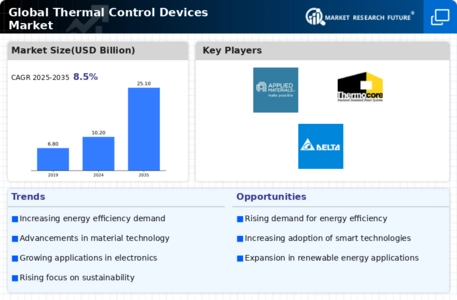
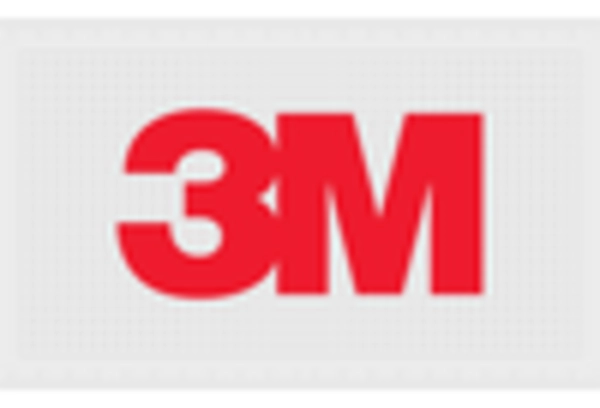
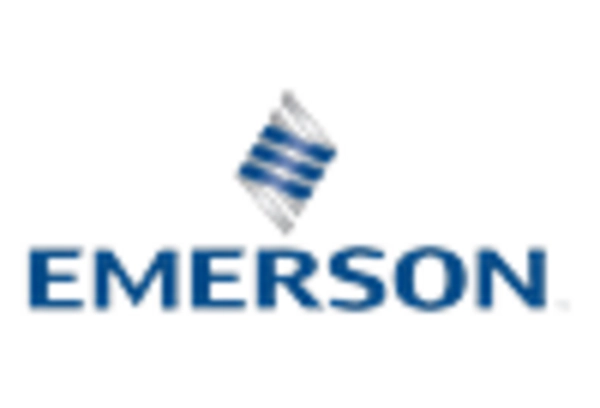
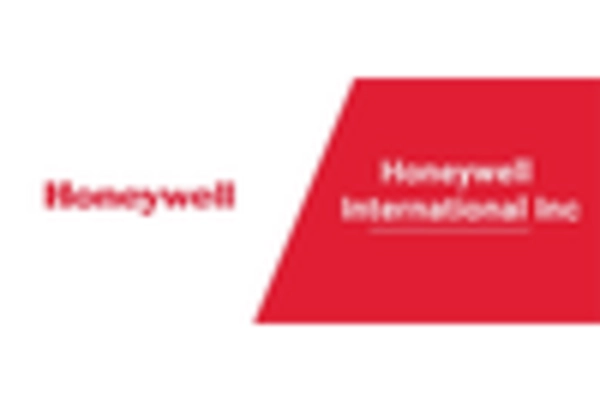
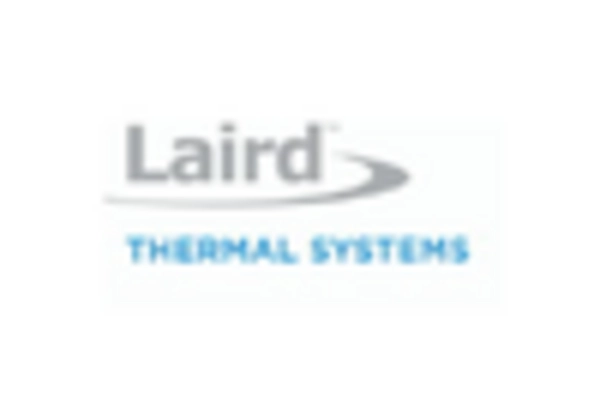
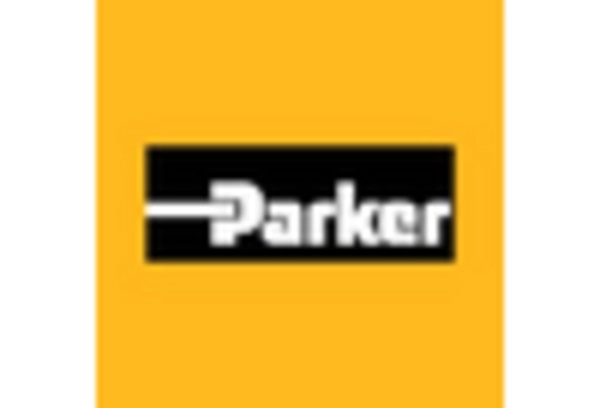
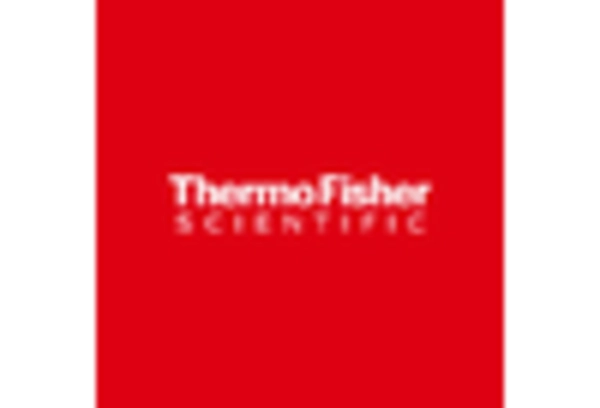

Leave a Comment